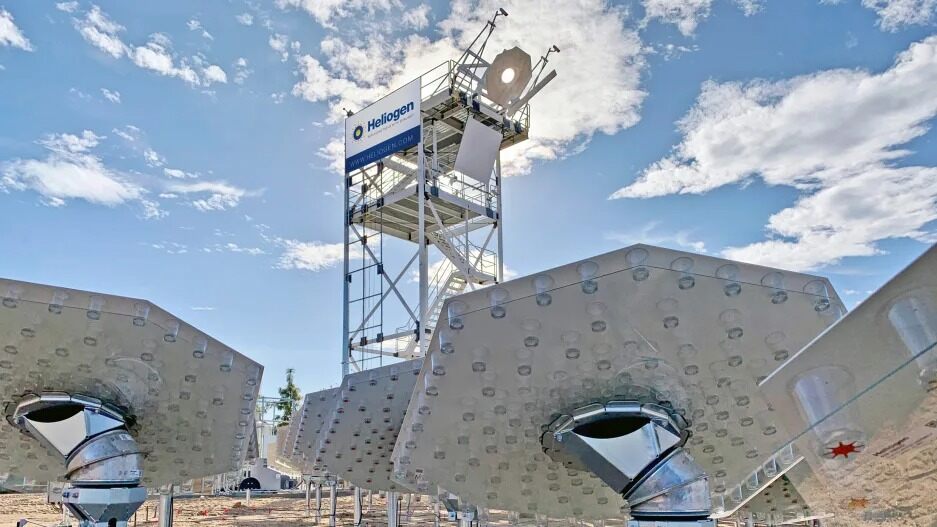- | 5:09 pm
How much could renewable sources like solar and thermal shape our future energy needs?
On this week’s ‘World Changing Ideas’: how a ‘sunlight refinery’ is producing green hydrogen, an alternative fuel for the future.

Renewable energy is now cheaper than fossil fuels, and it’s less expensive to build and run a solar or wind farm than to operate a coal plant that already exists. That’s a huge win for cutting carbon emissions in energy production, and it’s broadened opportunities for innovation in power generation for the future. On today’s episode of the World Changing Ideas podcast, we explore some of those renewable options, as well as how cost will continue to be a factor in the popularity of their use.
We first speak to a company called Clearloop, which uses carbon offsets donated by private companies to fund local solar projects, particularly in areas that still rely on carbon-intense energy sources. “Any company that wants to offset a portion of their carbon footprint can help us subsidize a number of watts that then help us essentially crowdfund the construction of a solar project,” explains CEO Laura Zapata, who cofounded Clearloop with Phil Bredesen, a former governor of Tennessee.

Laura Zapata [Photo: Clearloop]
The two projects launched so far take advantage of areas with abundant sunshine: Jackson, Tennessee, where the company aims to build a million watts of solar capacity, enough to power 200 homes for 40 years; and Panola County, Mississippi, to host a capacity of 10 million watts, enough to fuel 2,000 homes in the Appalachian Foothills and Mississippi Delta. Respectively, these projects are estimated to reclaim 60 million and 565 million pounds of CO2.
Of course, the sun—and wind, for that matter—aren’t always available, and certainly not everywhere. “Heavy industry runs 24-7. You don’t find any factories that shut down and only run one shift,” says Bill Gross, founder and CEO of Heliogen, a company that stores as much thermal energy as possible to then convert to green hydrogen, an alternative fuel.

Bill Gross [Photo: Heliogen]
“I feel it’s all about using science and technology to find a way to beat that price of fossil fuel,” Gross says. Heliogen has built a “sunlight refinery”: a setup whereby thousands of mirrors use AI and computer vision to reflect beams of sunlight from an acre of land down onto a single spot at the top of a tower, the size of a basketball hoop. That concentration allows the collected sunlight to reach temperatures of more than 1,000 degrees Celsius (or, 1,832 degrees Fahrenheit).It then stores that thermal energy in tanks of gravel. “Imagine a thousand pizza stones in an oven where you close the door after you’ve heated them up,” Gross says. “Those are going to stay hot for a very long time.” The energy can then be easily transported to less sunny climes, wherever it’s needed. “It allows us to run on cloudy days. It allows us to run through any other kind of interruption. That’s what’s crucial for the world because we all want to have uninterruptible power.”
They then convert that energy into green hydrogen via electrolysis, which essentially splits the hydrogen from water (and an important distinction from dirty hydrogen, which is traditionally produced from methane). “When you burn hydrogen, it releases nothing,” Gross says. “It releases just water vapor to the atmosphere. That’s the beauty of hydrogen.”
Hydrogen is still relatively pricey, but many experts believe the cost is likely to become competitive in industries like transportation by 2025. “As the economics become better, the capital will flow to the projects that make the higher returns,” he says. “It’s important that humanity achieves this. This is the way to make a sustainable civilization.”








































